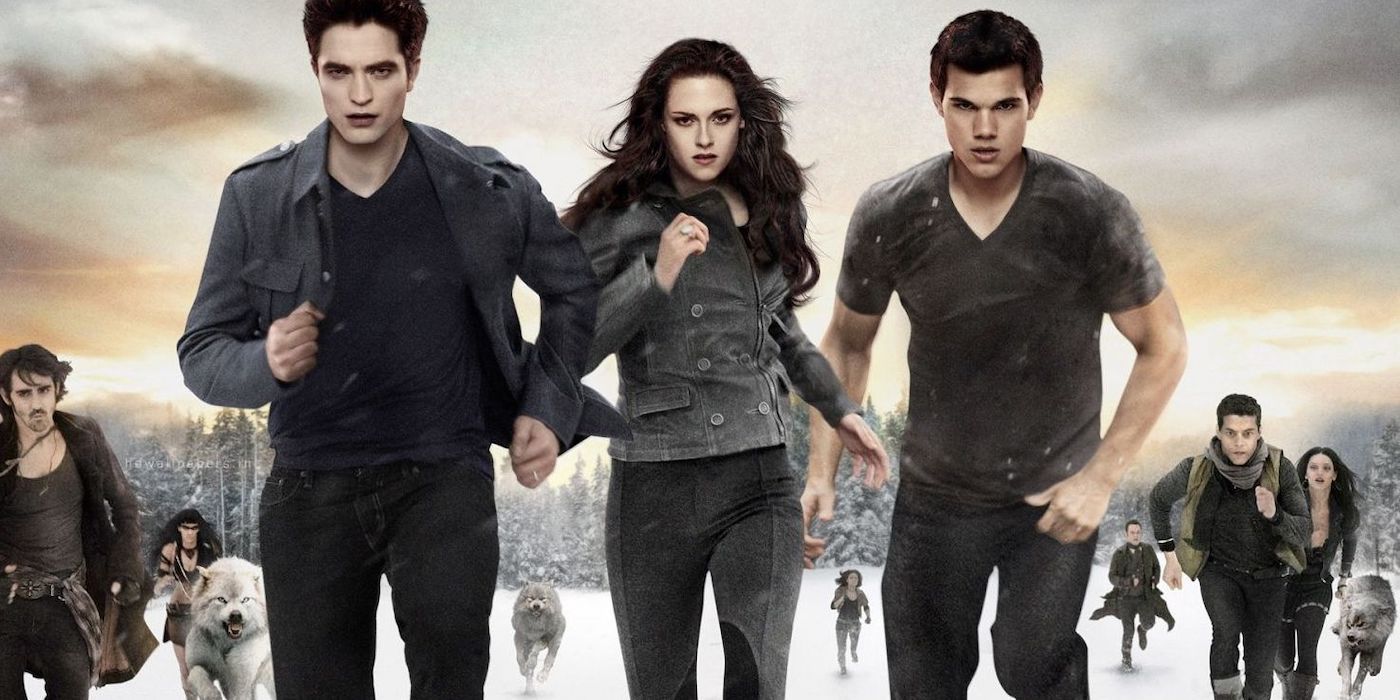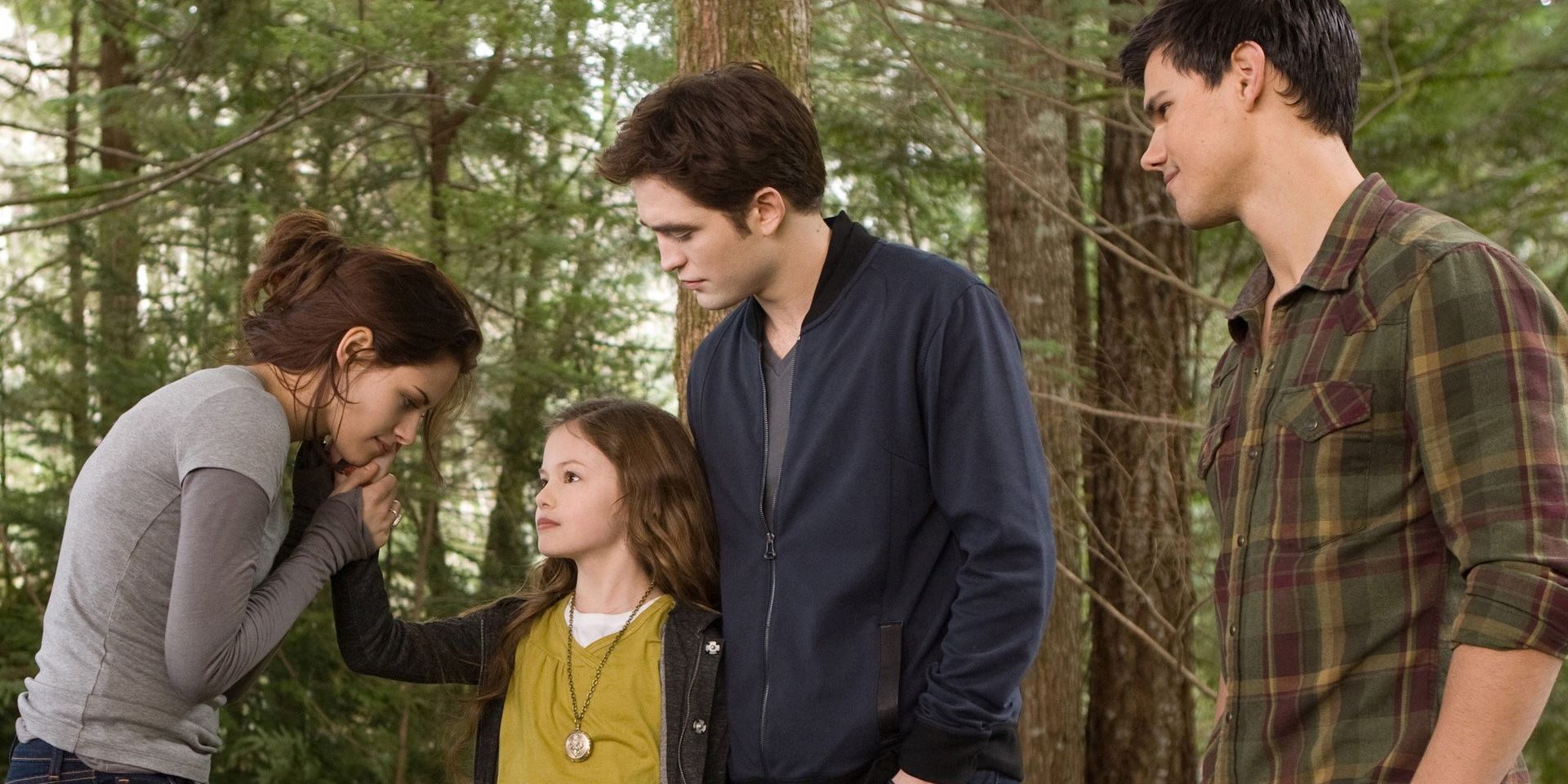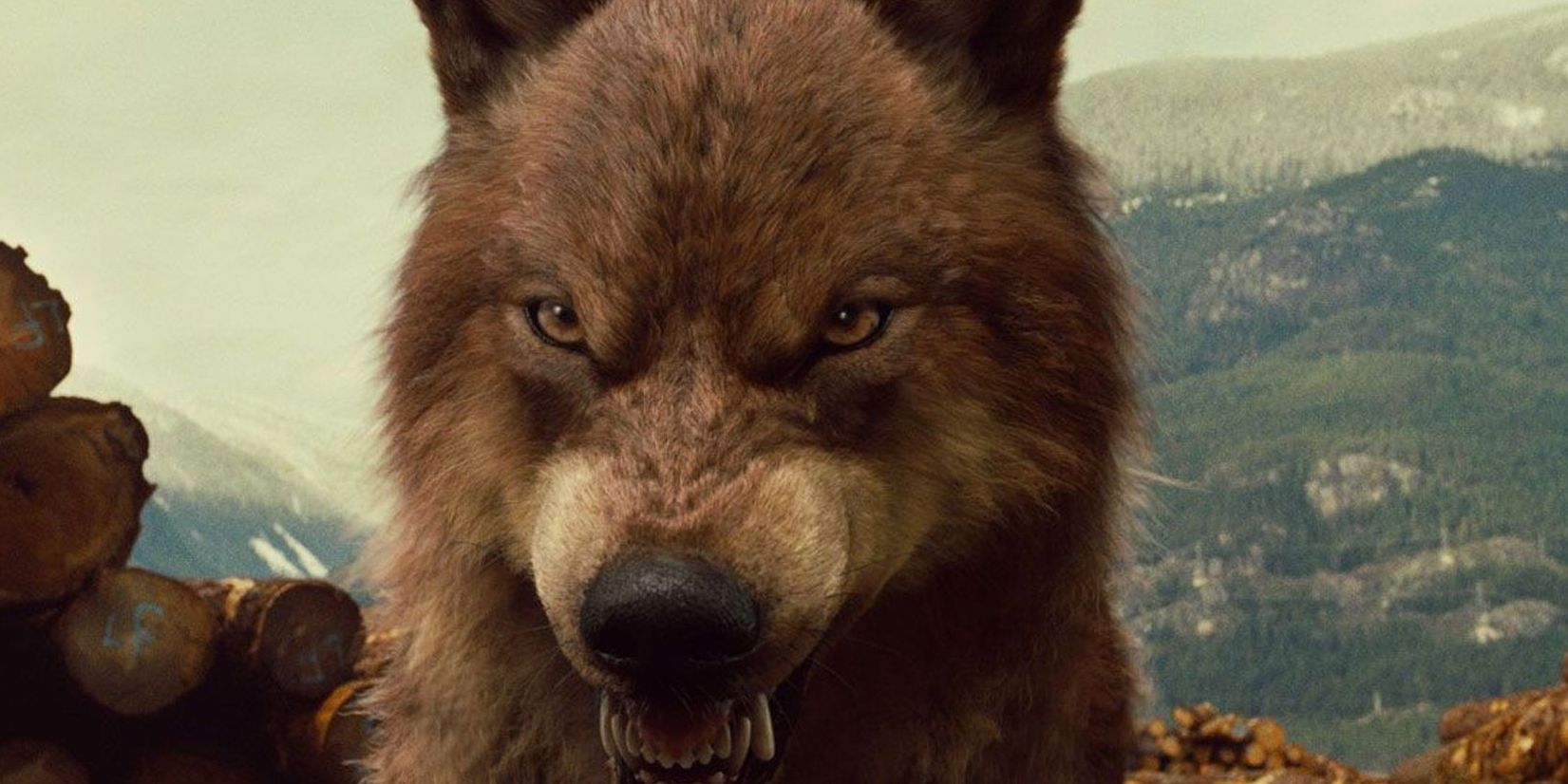Twilight's resurgence in popularity has led many fans to reexamine the franchise and what made it great. The movies, for instance, are interesting because it seemed like, at least sometimes, the filmmakers heard the complaints about the books and wanted to remedy them. This isn't always the case, obviously; changing some of the things readers disliked could have resulted in an entirely different story. But in one case -- that of the climactic scene in Breaking Dawn -- they managed to improve on the source material in a way that feels almost like metafiction.
In the Breaking Dawn novel, Bella (Kristen Stewart) and Edward (Robert Pattinson) get married and soon conceive a child; after a speedy month-long pregnancy, Bella goes into labor and nearly dies in the process. The child, a vampire/human hybrid named Renesmee (after Bella's mother Renee and Cullen matriarch Esme), grows rapidly and is "imprinted" on by Bella's werewolf friend Jacob (Taylor Lautner). Imprinting is when Twilight werewolves bond permanently with their soulmate, and, per this example, it's no respecter of things like age. Jacob becomes Renesmee's protector and the Quileute werewolves make peace with the Cullens.
Then, everything goes horribly wrong. Irina, a vampire who's previously been allied with the Cullens, sees Renesmee and mistakes her for an "immortal child." In the Twilight universe, it's against vampire law to turn children into vampires because they're too impulsive and violent, and doing so is accordingly punishable by death. Irina reports this to the Volturi, the vampire lawmakers, and the Cullens realize that they're headed for a confrontation.
They spend the next month gathering friends to both vouch for Renesmee and to defend the family if need be. In the end, Team Cullen Family is comprised of: the Forks vampires, the Quileute werewolves, six "covens" of other vampires (some also vegetarian, some just sympathetic), and several vampire nomads. A notable amount of these vampires have extra powers, like Alice's (Ashley Greene) psychic visions, Jasper's empathy and Edward's mind-reading: Bella herself learns the ability to shield others from the effects of others' abilities, and other vampires' powers include electric shocks, elemental control and the creation and projection of illusions. What ensues feels like a written version of a training montage that could be found in an X-Men movie.
But when the Volturi -- many of whom sport their own special abilities -- finally arrive, the final battle never happens. The Volturi kill Irina for her lie (though it's really a misunderstanding) but then, after the Cullens calmly explain the situation, the Volturi just decide to leave and let them be. It's a happy ending for the characters, but it's frustratingly anticlimactic for readers, who expected a big, again X-Men-style, battle.
Breaking Dawn - Part 2 cheekily acknowledges this frustration by staging exactly the kind of battle the book seemed to be leading up to. Alice shows Volturi leader Aro (Michael Sheen) her vision of what will happen if the Volturi decide to attack, then disgustedly declares, "It doesn't matter what I show you. Even when you see, you still won't change your decision." Volturi guards grab Alice, Carlisle (Peter Facinelli) goes to defend her and promptly gets his head torn off, Esme (Elizabeth Reaser) screams and chaos breaks out.
What ensues is a ten-minute masterpiece. Half a dozen vampires, including Alice's mate Jasper (Jackson Rathbone) and Aro himself, get similarly decapitated; Benjamin (Rami Malek), the omnielemental vampire, hits the ground so hard, a crevasse opens up that seems to reach to the Earth's molten center; one wolf's neck is broken and another sacrifices himself to protect Esme before falling into that crack in the ground; both sides face massive losses. At one point, Volturi member Marcus (Christopher Heyerdahl) anticipates his death and gleefully moans "fiiiinally" as he gets torn apart. Both Edward and Bella have near-death experiences.
And then, just as Aro's decapitated head is about to be set on fire, it cuts back to Alice and Aro as they were at the fight's beginning. "That's your future," Alice says grimly, "unless you decide on another course." She then introduces another vampire/human hybrid, Nahuel (J.D. Pardo), who's managed to live safely and secretly without threatening vampirekind, and the Volturi decide it would be wise to leave the Cullens, and Rensemee, be.
The first fans to view the fight were initially shocked and upset by it, particularly by the deaths of Carlisle and Jasper, but once it became clear that their favorite characters were actually safe, the fight scene took on a new meaning. The movie managed to turn a boring resolution on its head without actually changing the end result. It let the characters show off their fight training and superpowers, had some truly emotional moments and then promptly undid it all, using Alice's powers as a way to present a more interesting possibility. It seems to both poke fun at and lift up the material, which is very in keeping with the tone of the Twilight fandom renaissance.
The Twilight Saga is now available to stream on Netflix.



